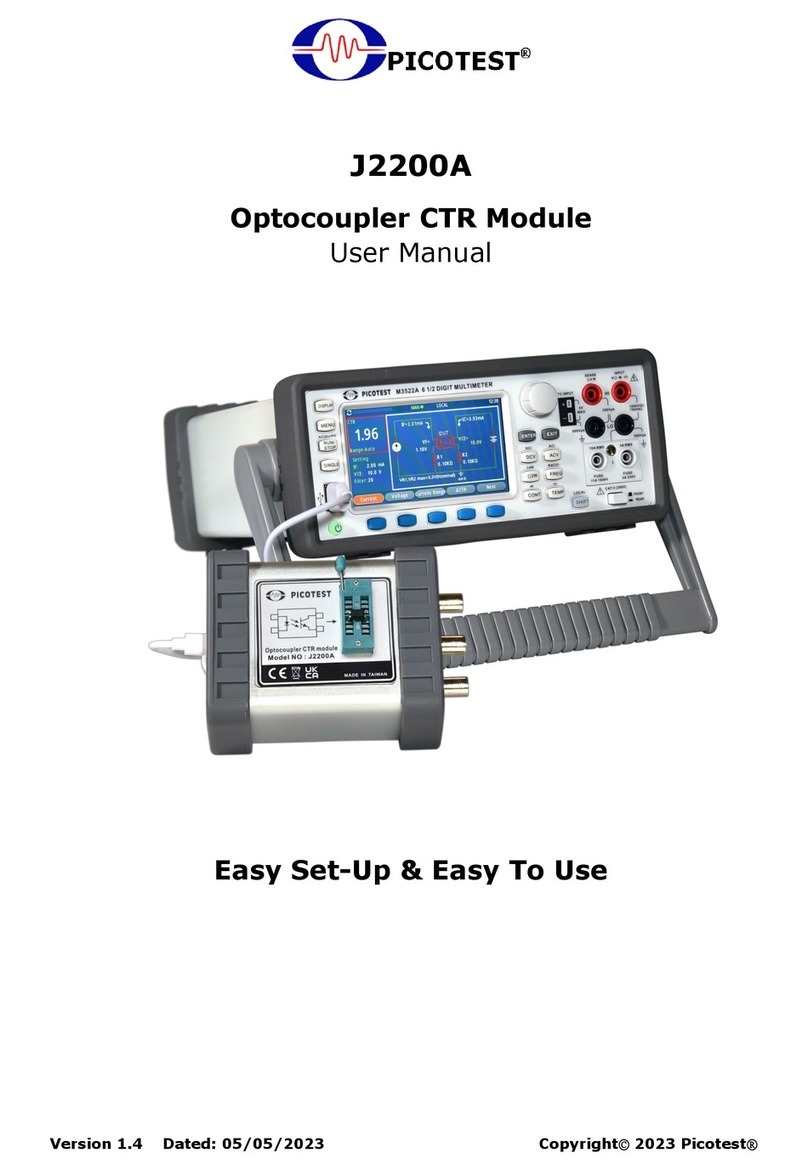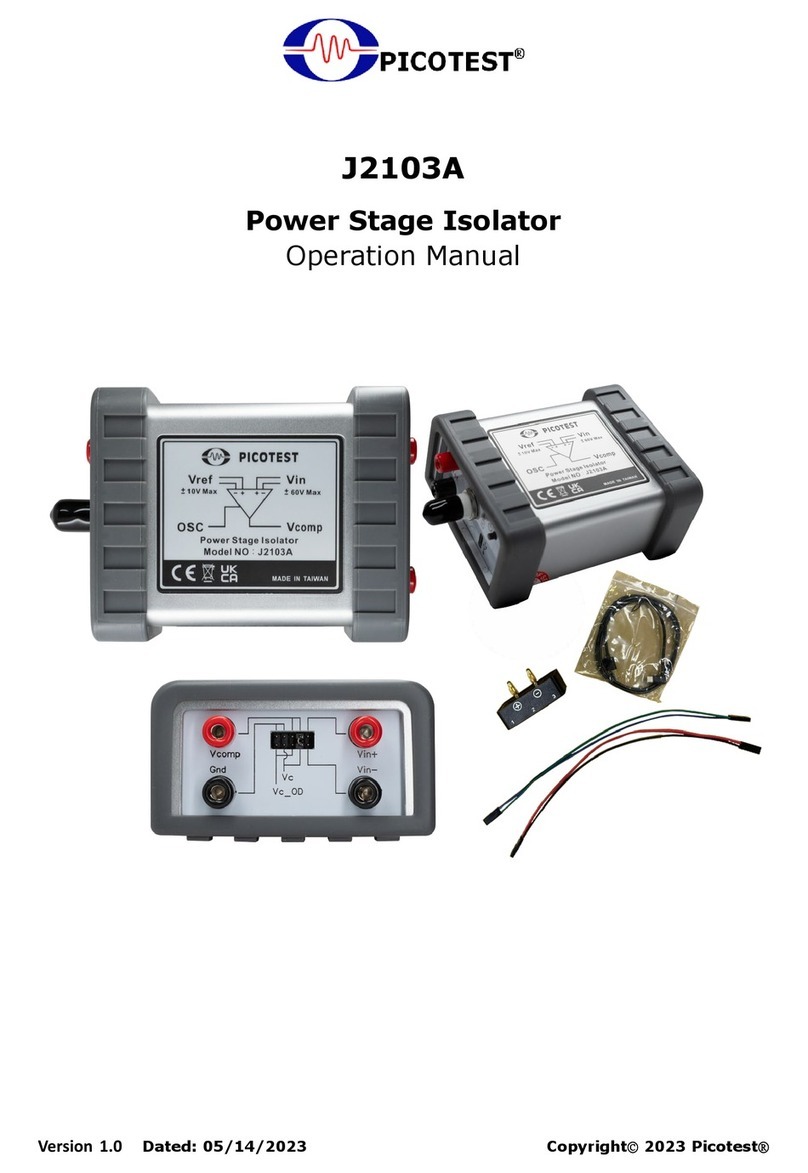
Harmonic Comb 7
Mode 1 is the default mode at power-up, and steps through modes 2 through 4 in order to
excite all harmonic frequencies - thus quickly revealing problem resonances. Modes 1
through 4 include pulse width dithering to help fill in gaps between combs.
Once resonant frequencies are identified in Mode 1, Modes 2 through 4, with frequencies of
1 kHz, 100 kHz, and 10 MHz, respectively, may be used to zero in on specific resonances.
For instance, the 1kHz impulse covers low frequencies nicely and the comb spurs are 1kHz
apart. But the signal level falls inversely with the harmonic number, so by 10MHz there isn’t
any signal left. The 100kHz picks up here and at 10MHz still has decent signal with the
spurs 100kHz apart. At 100kHz we have lost about 40dB, but the signal is still quite usable.
Modes 2 and 3 are high enough resolution to accurately identify circuit resonances.
However, the 10 MHz mode is useful in determining higher-frequency resonances for EMI
troubleshooting.
Mode 5 is the exception and is a simple 50% duty cycle square wave running at 10 kHz.
This is often handy for probe calibration and for simple load step testing.
The device is completely self-contained, requiring only a 5V supply from any USB port,
including USB battery packs. This allows portable operation.
Useful harmonic content can easily cover up to 1.5 GHz. No external software is required
for operation.
Connecting the Comb
•The Comb is powered by plugging it into any USB receptacle.
•This puts the Comb into Mode 1, which is the mode usually used for






























